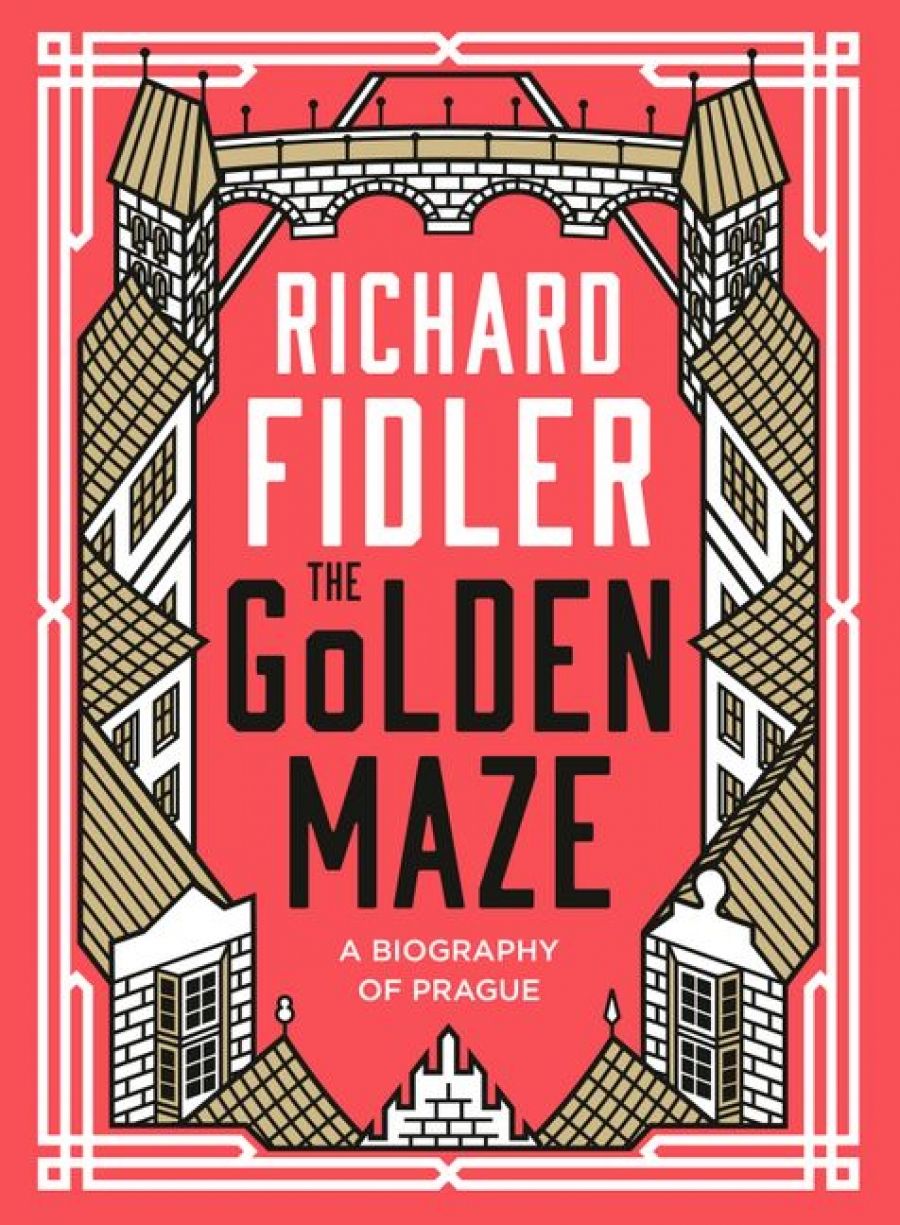
- Free Article: No
- Contents Category: Biography
- Review Article: Yes
- Custom Highlight Text:
On May Day 1955, two years after his death, a colossal memorial to Joseph Stalin was unveiled on a prominent site north of central. Towering above the city and containing 14,000 tons of granite, it was the largest statue of the dictator ever created. Stalin was depicted at the head of a representative group of citizens, dubbed by some as a bread queue. Otakar Švec, a prominent Czech sculptor, had won the commission in 1949. After the work’s stressful gestation, he killed himself shortly before the work was unveiled; there had been constant interference and police surveillance, and his wife committed suicide in 1954.
- Grid Image (300px * 250px):

- Book 1 Title: The Golden Maze
- Book 1 Subtitle: A biography of Prague
- Book 1 Biblio: ABC Books $39.99 hb, 580 pp
- Book 1 Readings Link: booktopia.kh4ffx.net/bZ31M
This is just one of many stories about Prague that make it so fascinating to read about and complex to understand. For much of its history, Prague has been under foreign domination in one form or another (for centuries it was the Habsburgs). Its monuments are prone to be invested with powerful symbolism whose meaning is subject to regime change. Prague – no stranger to extremes – was at the vanguard of proto-Protestant reform spearheaded by Jan Hus at the beginning of the fifteenth century. The famous defenestration of 1618 ignited the bloodbath that was the Thirty Years’ War. Once Habsburg control was re-established in 1620, Catholicism reasserted itself with a vengeance and numerous splendid baroque churches.
There were many times throughout its history when Prague, however picturesque, cannot have been a congenial place to live. Authoritarian regimes and state control took their toll. Given the destruction repeatedly wrought there over centuries, it is surprising how much of its historical fabric remains intact. Unlike many central-European cities during the twentieth century, Prague survived wars and invasion without too much damage to its buildings. Not so its citizens, who had to endure more than half a century of totalitarian control, much of it in terror – first from the Nazis (who occupied it from 1939 to 1945), then the Russians.
Richard Fidler, who first visited Prague as the Iron Curtain was corroding, is one of many visitors who have been captivated by this city straddling the Vltava. In The Golden Maze: A biography of Prague he interweaves his own visits, experiences, and impressions of the city with the bigger picture of its history. When Fidler first visited in January 1990, he was fortunate enough to be able to stay at the shabby but splendid art nouveau Grand Hotel Evropa on Wenceslas Square. Prague’s late nineteenthand twentieth-century architecture is every bit as impressive as its medieval, Renaissance, and baroque architecture.
Fidler is a popular writer and broadcaster – not a historian. The Golden Maze is a straightforward account of Prague from the earliest times to the present day. The narrative is informative and approachable. If you are planning to visit Prague and are looking for an engaging, well-written guide, this is a good place to start; it will whet your appetite to delve further. There is a vast literature on Prague, ranging from informative travel guides to substantial tomes. Fidler does include some interesting trivia, such as Smetana’s preserved brain accidentally being flushed down a lavatory in the late 1940s, and that the young Spencer Tracy made his Broadway début as a robot when Karel Čapek’s 1921 play R.U.R. (Rossum’s Universal Robots) premièred in New York in 1922.
A large part of Prague’s history illustrates the resilience of its citizens under foreign domination. Fidler’s interest is in the more recent history of the city; his descriptions of the Prague Spring and the Soviet invasion of 1968 are riveting. The police state, surveillance, and betrayals during the Soviet era make truly depressing reading. The future does not appear all that promising either.
It is for the period from the 1960s to the 1980s that Fidler’s journalistic and descriptive skills really come to the fore and we gain insights into modern Prague. He cites the compromises that were being introduced during the creation of the Czech constitution in late 1989: ‘The central clauses of one-party rules were pulled from the constitution like rotten teeth.’ In addition to his interview with Jaroslav Kovaricek, who immigrated to Australia after the Russian invasion and later became a well-known ABC broadcaster, Fidler interviews others who were in Prague during these decades.
Fidler reports on a poignant encounter during the 1968 invasion when Kovaricek met a Russian tank commander on the street. The young Russian didn’t want to be in Prague; he had no quarrel with the Czechs. Sent there as part of his national service, he longed to be back home with his wife and new child.
It is well worth seeking out images from that tumultuous invasion. In 2018, at the Museum of Decorative Arts in Prague, there was a splendid retrospective exhibition for the photographer Josef Koudelka. The section dedicated to his famous images of the 1968 invasion was numbing and sobering for Czechs and tourists alike.


Comments powered by CComment